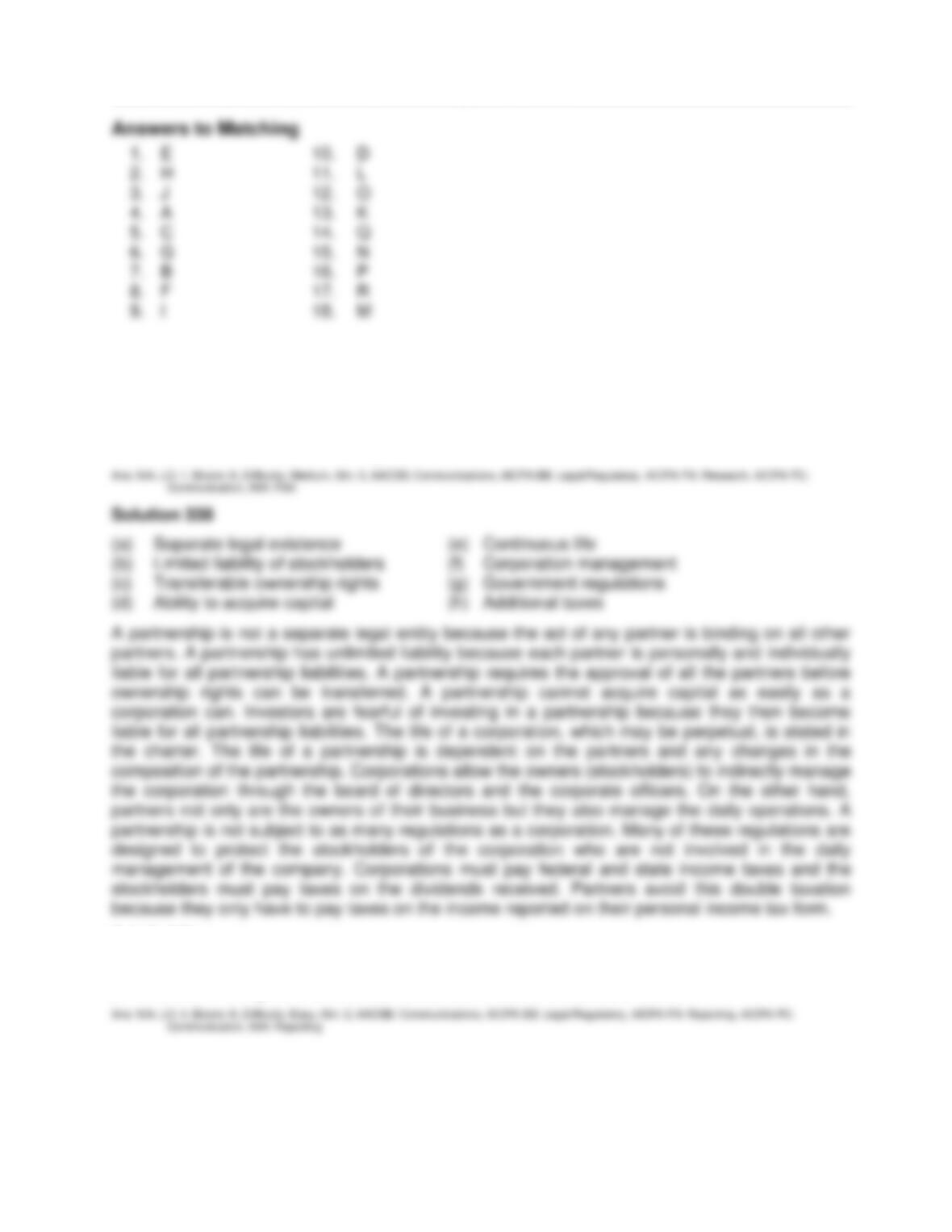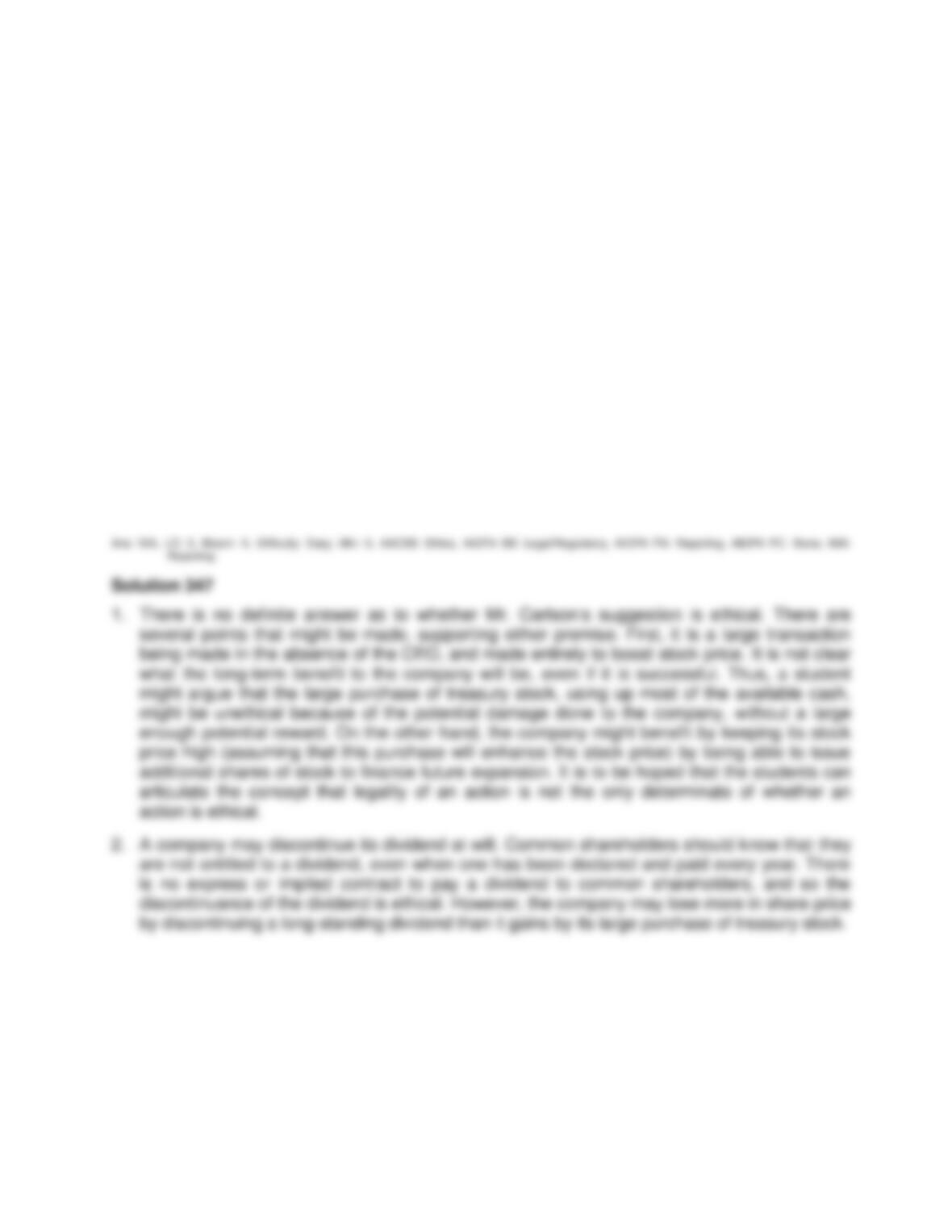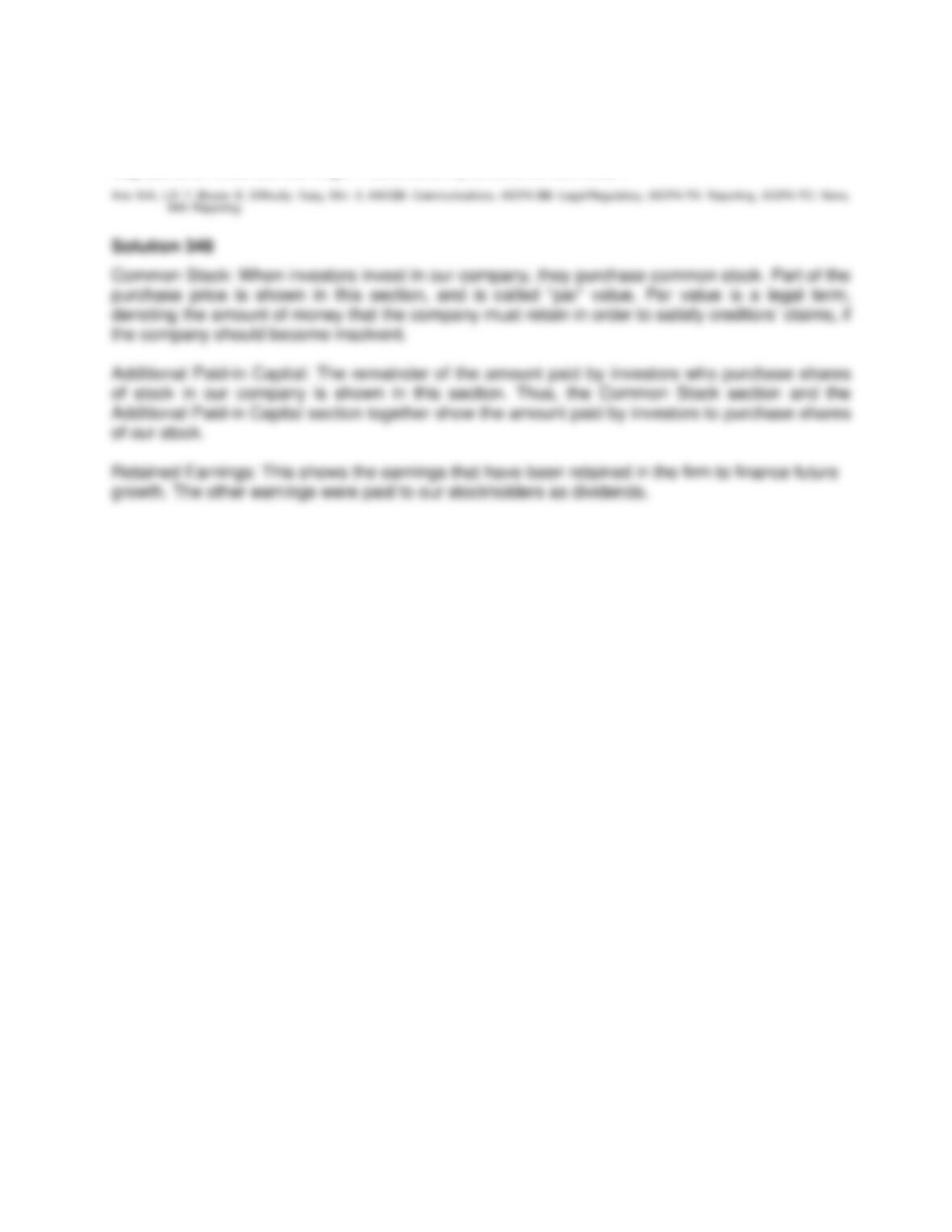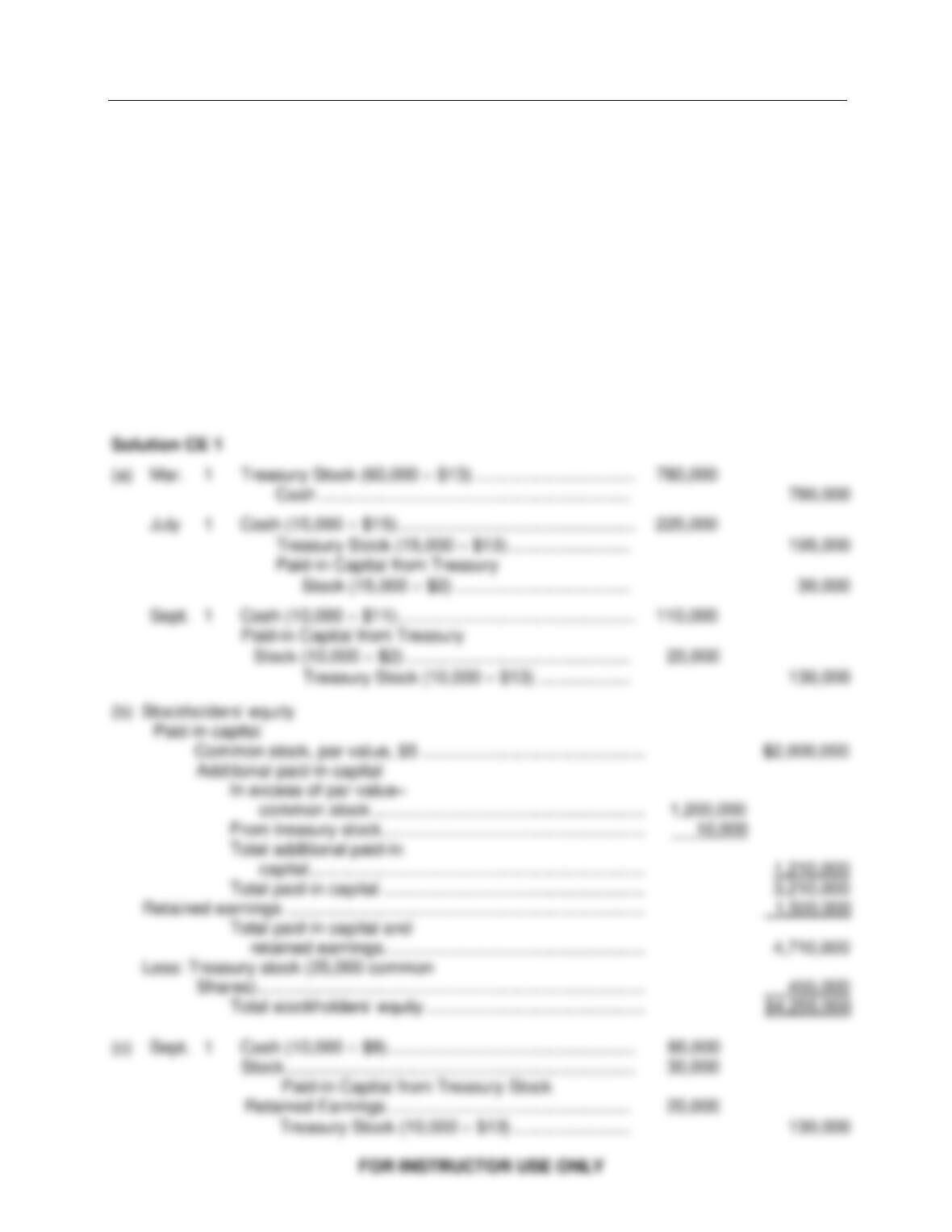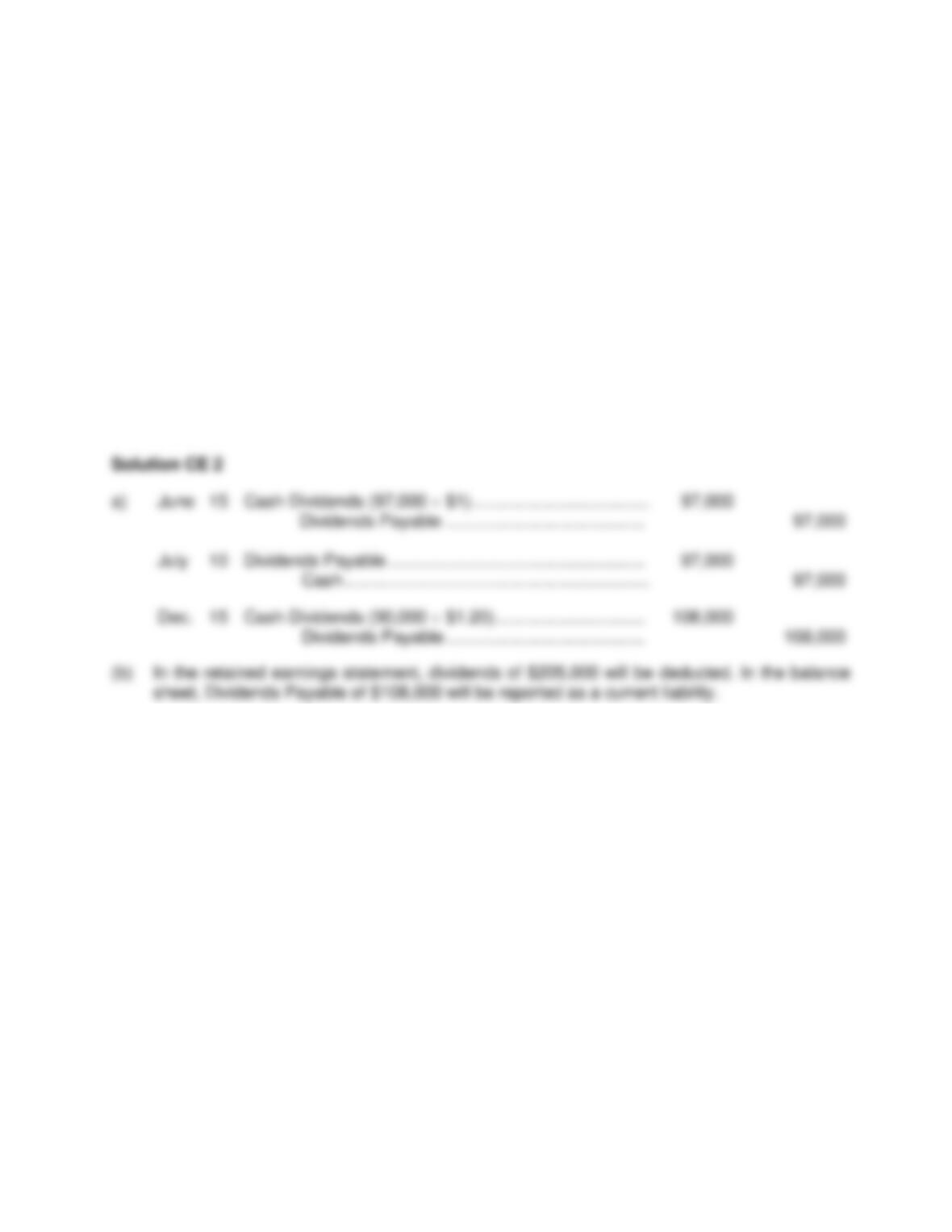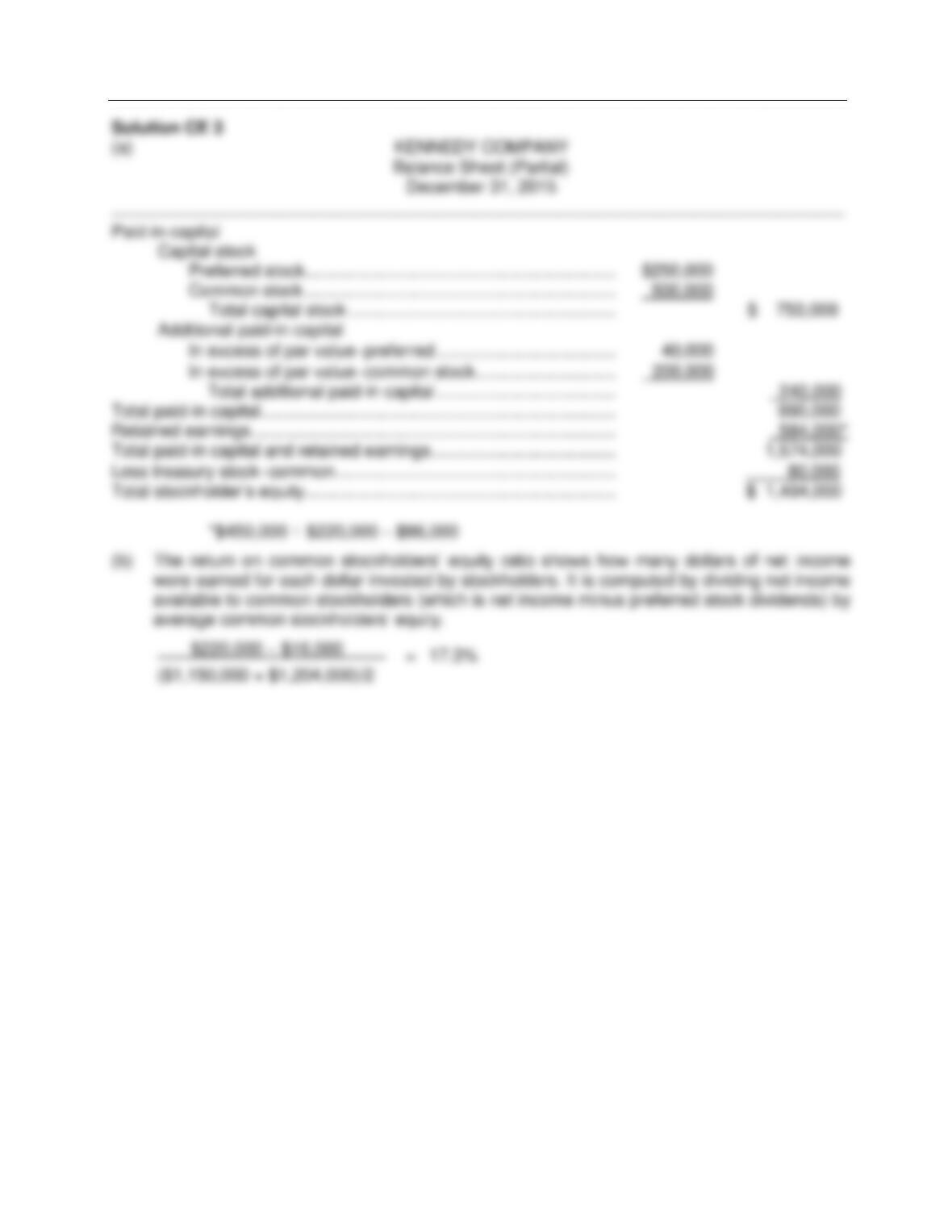215. Bacon Corporation began business by issuing 180,000 shares of $5 par value common
stock for $25 per share. During its first year, the corporation sustained a net loss of
$30,000. The year-end balance sheet would show
a. Common stock of $900,000.
b. Common stock of $4,500,000.
c. Total paid-in capital of $4,470,000.
d. Total paid-in capital of $930,000.
216. Realistic Corporation’s December 31, 2015 balance sheet showed the following:
8% preferred stock, $20 par value, cumulative, 20,000 shares
authorized; 10,000 shares issued $ 200,000
Common stock, $10 par value, 2,000,000 shares authorized;
1,950,000 shares issued, 1,930,000 shares outstanding 19,500,000
Paid-in capital in excess of par—preferred stock 60,000
Paid-in capital in excess of par—common stock 24,000,000
Retained earnings 7,650,000
Treasury stock (20,000 shares) 630,000
Realistic’s total paid-in capital was
a. $43,760,000.
b. $44,390,000.
c. $43,130,000.
d. $24,060,000.
217. Rouse Corporation’s December 31, 2015 balance sheet showed the following:
8% preferred stock, $10 par value, cumulative, 20,000 shares
authorized; 15,000 shares issued $ 150,000
Common stock, $10 par value, 2,000,000 shares authorized;
1,950,000 shares issued, 1,930,000 shares outstanding 19,500,000
Paid-in capital in excess of par—preferred stock 60,000
Paid-in capital in excess of par—common stock 24,000,000
Retained earnings 7,650,000
Treasury stock (20,000 shares) 630,000
Rouse’s total stockholders’ equity was
a. $51,990,000.
b. $43,710,000.
c. $51,360,000.
d. $50,730,000.





















































































